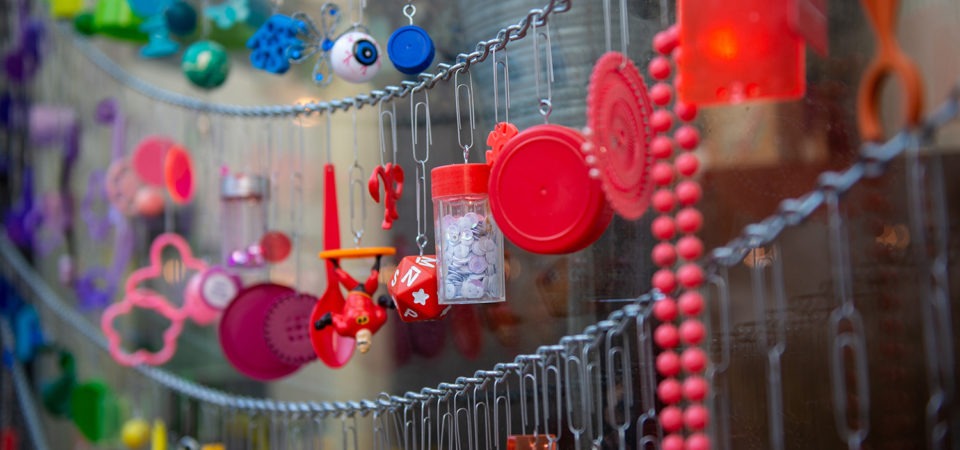Installation detail of Colors, 2021 – Upcycled plastic, recycled paper clips and chains. Dimensions variable.
Photo:Sarah Schwab – © 2021 Sarah Schwab
Buying bread wrapped in plastic is the quintessential example of our current, everyday consumer behavior. But in 1966, plastic bread bags were the latest thing, and they were fantastic.
Plastic had not yet taken over but was starting to become popular, with more than a quarter of all bread packaged in plastic bags. A sense of joy pervaded this Apollo era as handy new plastic products entered our lives. There was little distinction between novelty and innovation, and these were exciting times.
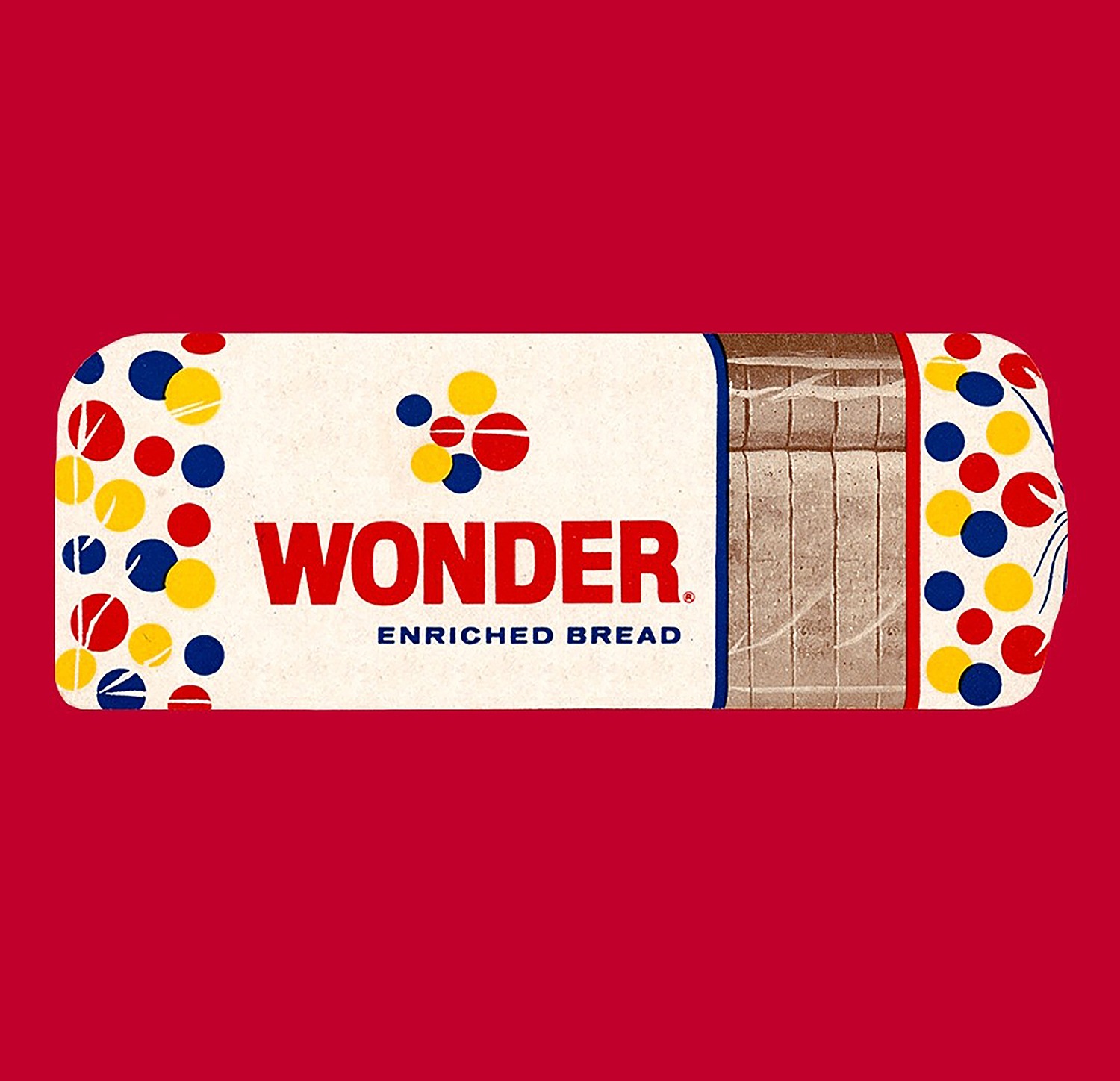
Vintage Wonder Bread® plastic wrapper from the 1960’s era.
As a child of the sixties, plastic represented the excitement of modern progress and innovation providing endless possibilities for industrial and household uses. All of it helped to make our lives more comfortable and convenient. But as a nine-year-old budding artist, my love of plastic was all about color. I was fascinated with the Wonder Bread bag from 1966. Overlapping discs in primary colors and of various diameters were printed across the bag like a stampede of gumballs. This new material for keeping bread fresh and sanitary boldly announced its arrival with a modern style of design emphasizing geometry with a bright color palette. This, to me, was contemporary art. It made us feel the future was now, and it was going to be cool.
We cherished our vinyl records and prized melamine, a newly developed plastic used for making Formica counters, kitchen flooring, and compartmentalized cafeteria trays. For the first time, our parents could install an entirely yellow kitchen or try other new color combinations never previously available. Each generation is defined by the colors of its plastic. Before the 1950s, all refrigerators, ovens, and cabinets were subdued, until modern materials arrived, like a prism projecting colors, where none had previously existed. All of this made an impression on my childhood; these were the shiny colors of candy that we collected in our plastic jack-o-lantern buckets, bright and happy. Unbeknownst to us, this was the beginning of an environmental nightmare. We truly had no idea…we thought plastic was magic.
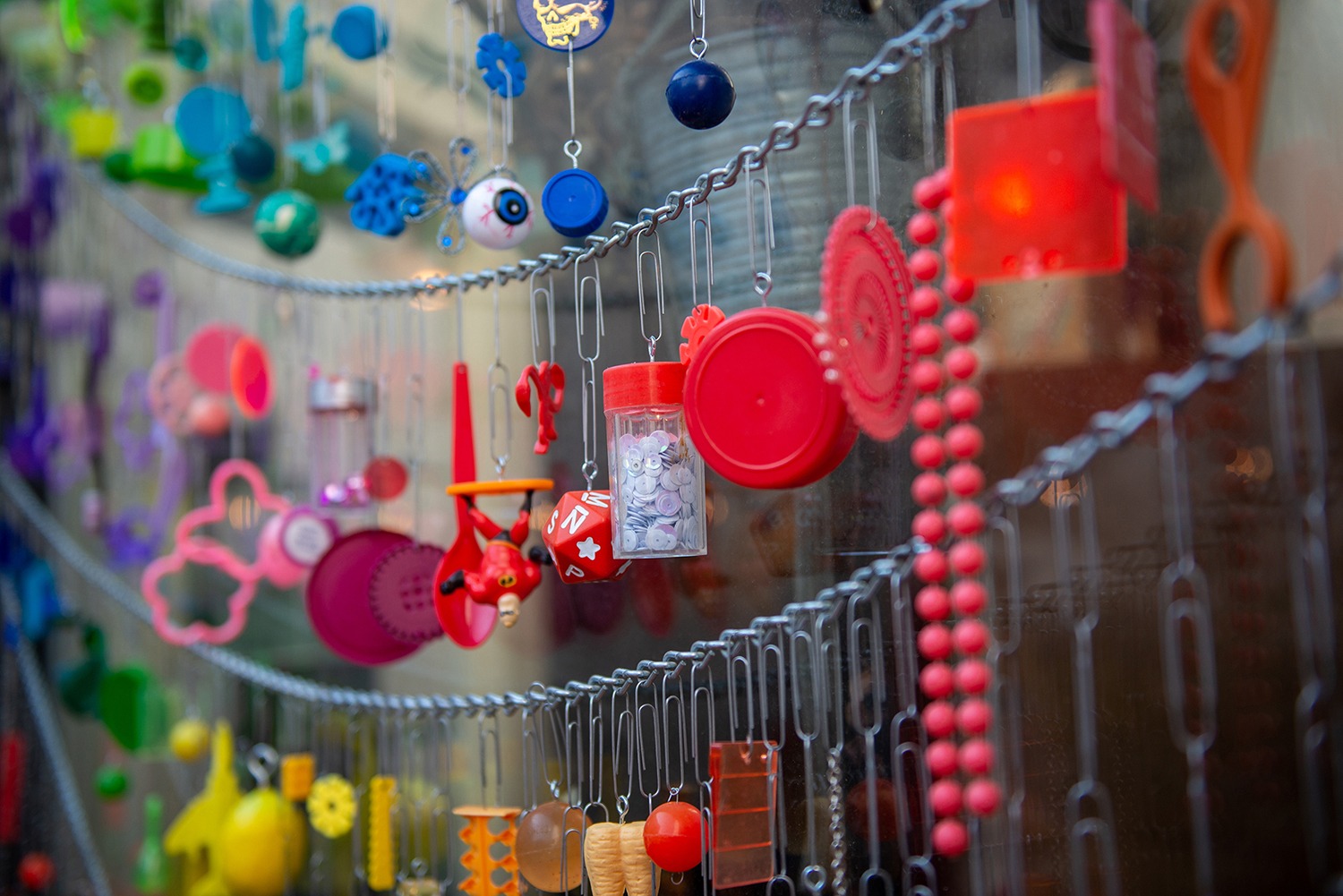
Installation detail of Colors
2021
Upcycled plastic, recycled paper clips and chains. Dimensions variable.
Photo:Sarah Schwab – © 2021 Sarah Schwab
Plastic transformed the world of toys. My favorite was Mattel’s VAC-U-FORM that allowed me to access the dangerously hot vacuum process used in factories for molding plastic. We used this same process to fabricate all kinds of novelty shapes, completely unaware that we were breathing poisonous fumes: we were just kids having fun.
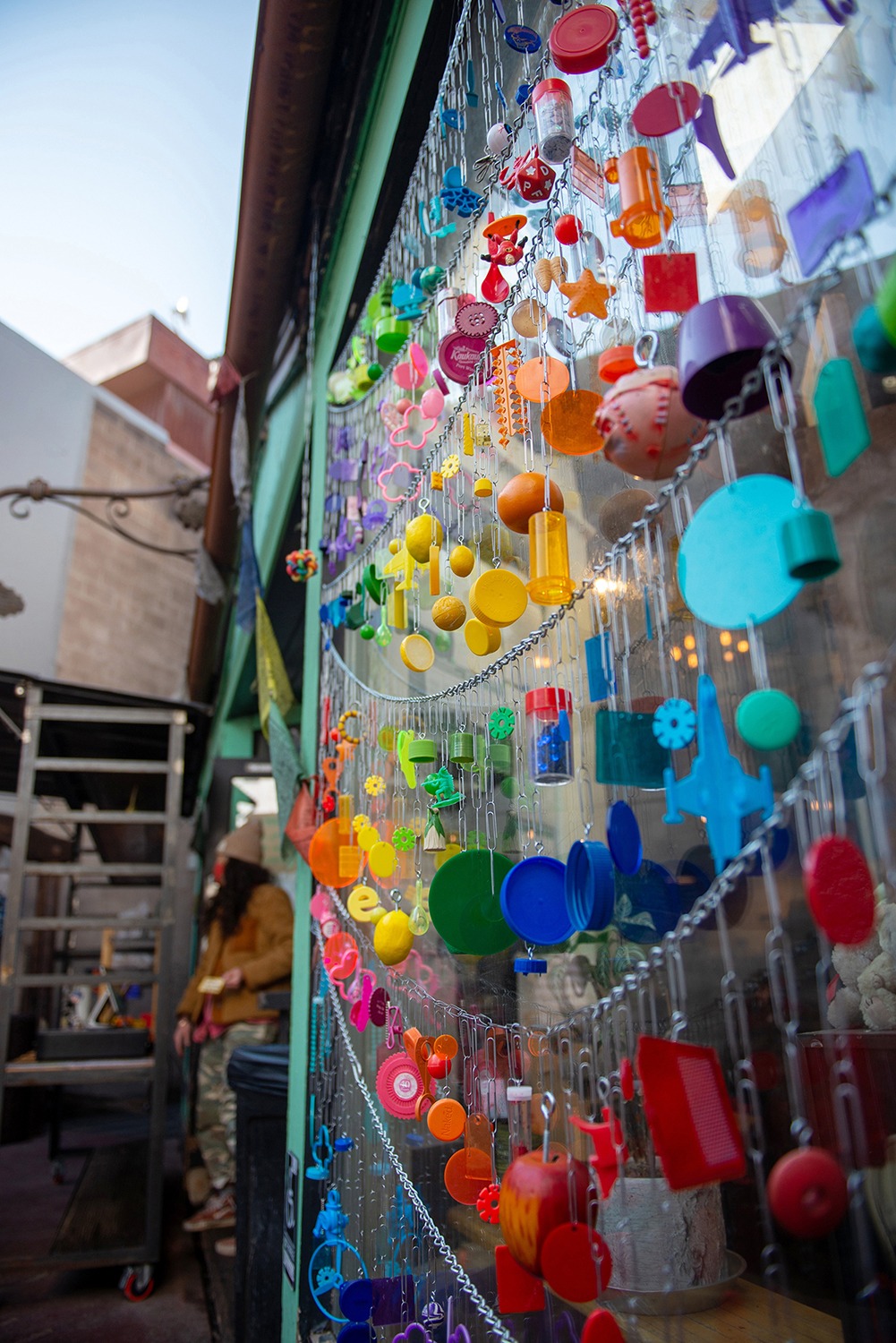
Installation detail of Colors
2021
Upcycled plastic and found objects, recycled paper clips and chain. Dimensions variable.
Photo: Sarah Schwab – © 2021 Sarah Schwab
In Girl Scouts, we knotted brightly colored plastic laces into lanyards, the vintage (but not biodegradable) version of friendship bracelets. Silly Putty, Mr. Potato Head, and Cooties ruled. I owned a plastic purse that I filled with found treasure and useless junk. Playing alone, I would take the items from my purse and arrange them into different patterns, over and over. This is the genesis story of my life as an artist.
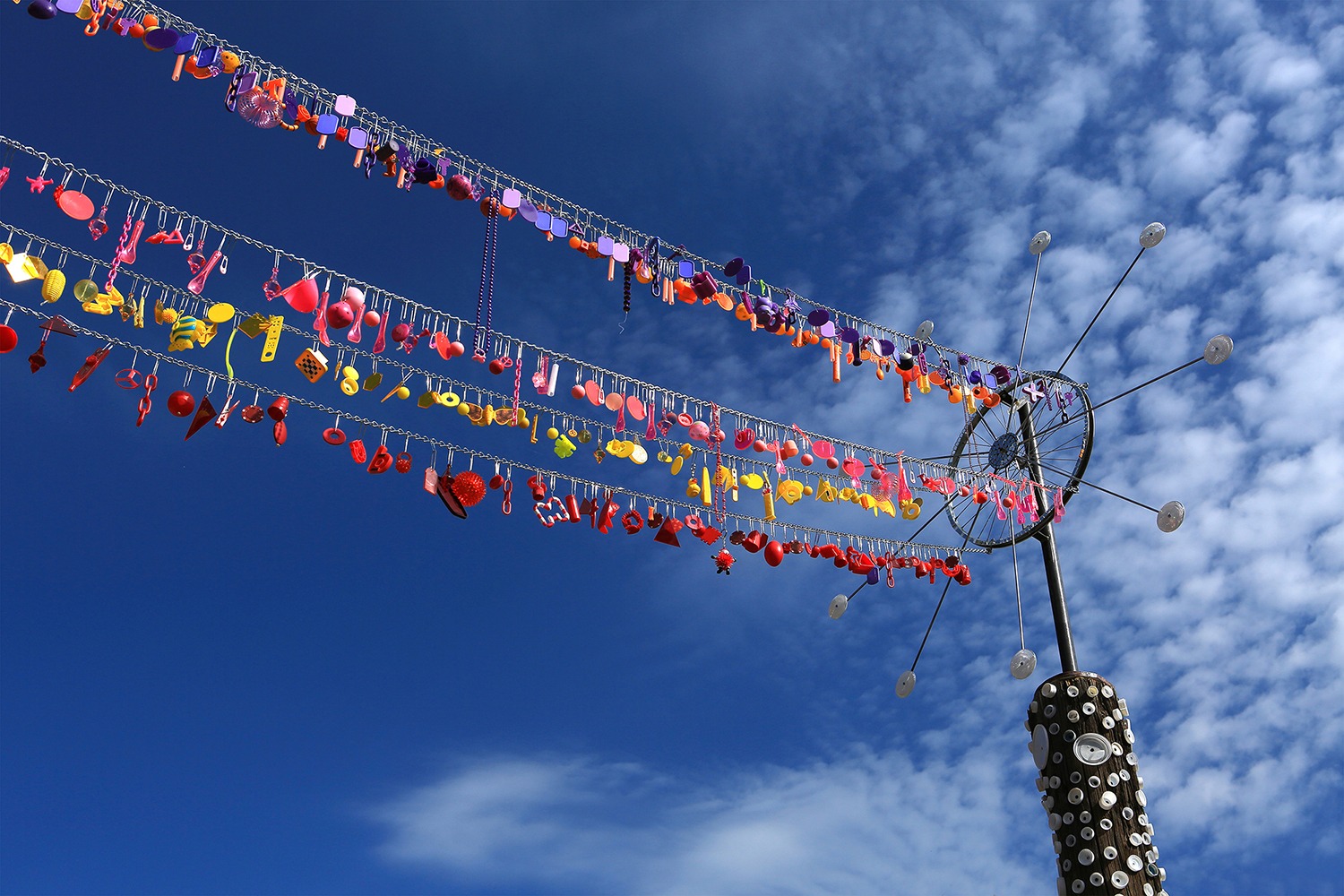
Installation view of The Space Between You and Me
2014
Upcycled plastic, found objects, steel chain, paper clips, plastic caps and repurposed bicycle rims. 24′ x 32′.8″
Photo: Joe Skalsky – © 2014 Joe Skalsky
I still find great pieces of broken plastic in parking lots and on the side of the road, relishing each piece for its shape and color. I sort hundreds of pieces into overflowing bins. Much of the found plastic goes into my installation work and my mosaics, which are made of broken tile and mirror, orphaned game pieces, and repurposed computer keys.
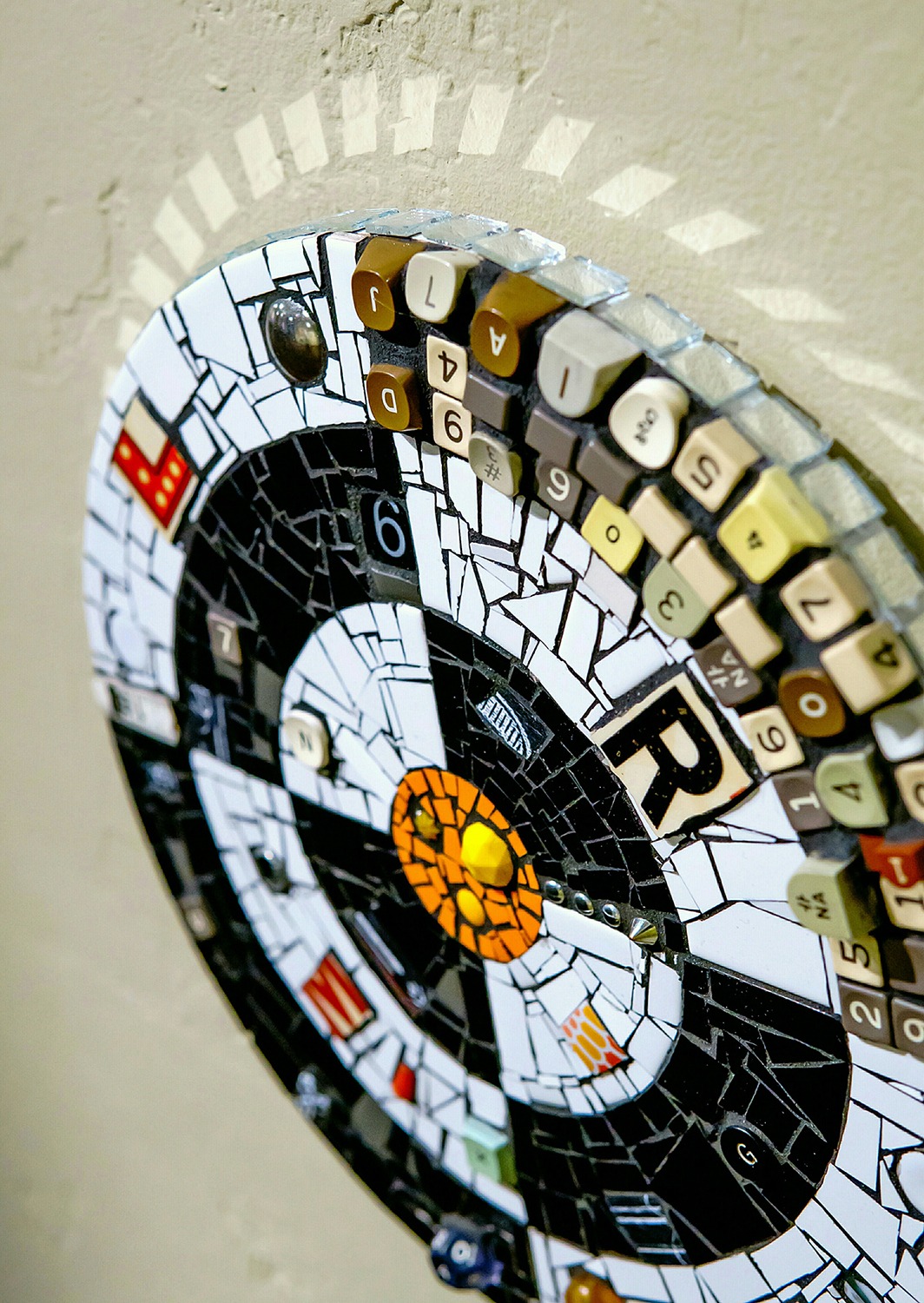
Installation detail from Can’t Find My Way
2016
Mixed media mosaic. Vintage computer keys, broken china, found objects, vintage glass, ceramic tile, antique metal buttons and mirror. 12″ diameter.
Photo: Dan Gundrum – © 2016 Dan Gundrum
Artists are the true recyclers of our society. Random townspeople leave anonymous boxes of plastic caps, broken china, and scrap metal at my studio door — too broken to keep, but too precious to send to the landfill. With the junk I find around dumpsters, that others give to me, and that I reuse from previous projects, I transform discarded objects into art. Turning nothing into something is my greatest passion.

Installation view of Selenite Healing Tower
2021
Salvaged wood, upcycled plastic, recycled paper clips, chain, glass crystals and mirror. 8′ x 3′(approx.)
Photo: Austin Halpern – © 2021 Austin Halpern
When one of my installations comes down, I gather all the plastic bits and save them for upcoming projects. I rearrange the same objects, over and over, just as I did with the trinkets from my childhood purse.
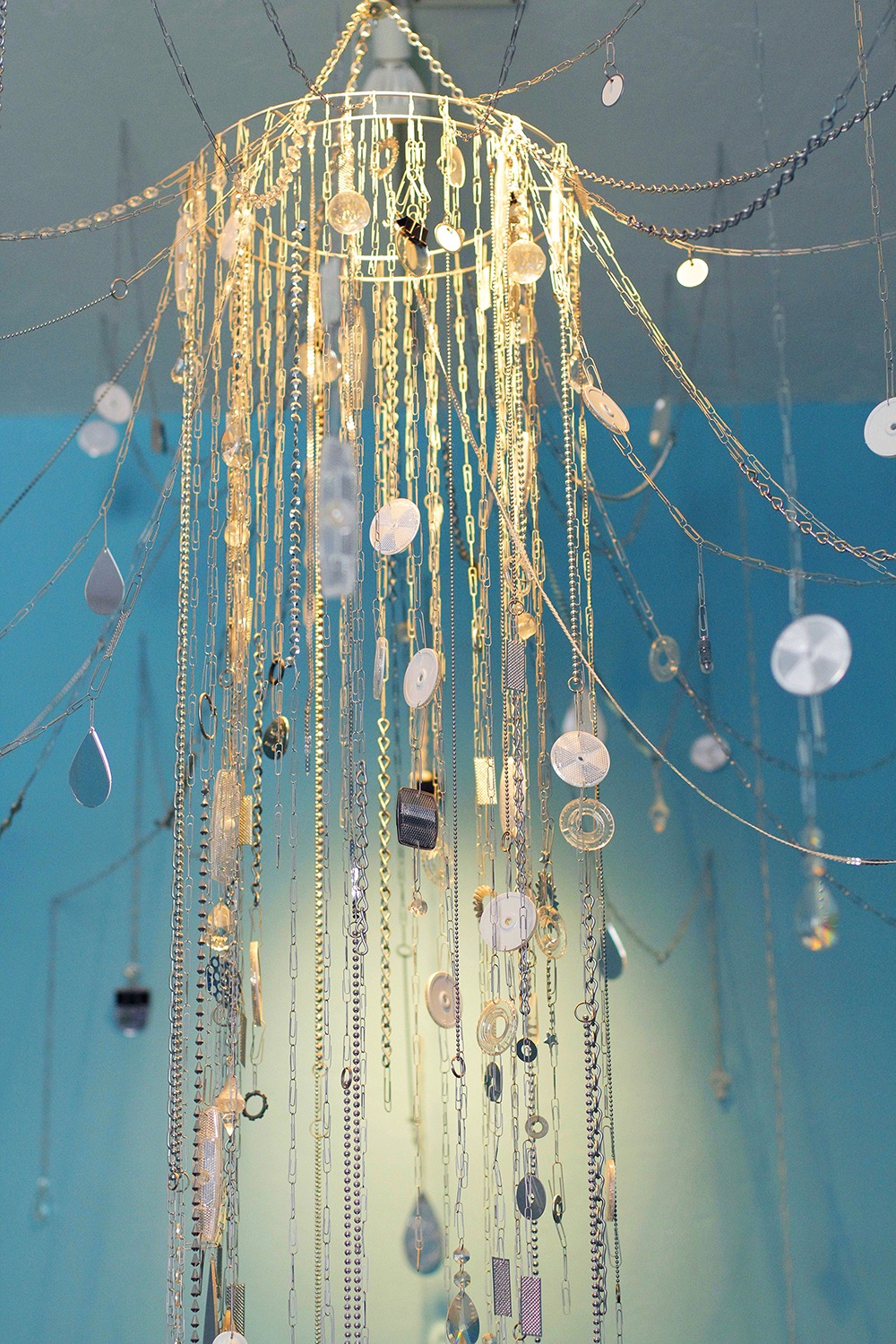
Installation detail of Reflector
2018
Upcycled reflectors, birth control containers, upcycled washers, vintage mardi gras beads, aluminum and stainless steel chain and found objects. Dimensions variable.
Photo: Tara Carter – © 2018 Tara Carter
Should I pay a penance every time I buy a single-use item? Do I even want to know how little my local recycling center is actually recycling? Are “bioplastics” truly more eco-friendly than conventional plastics? While I hate the mess plastics have created, I am still fascinated by the unexpected objects that wash up on our beaches.
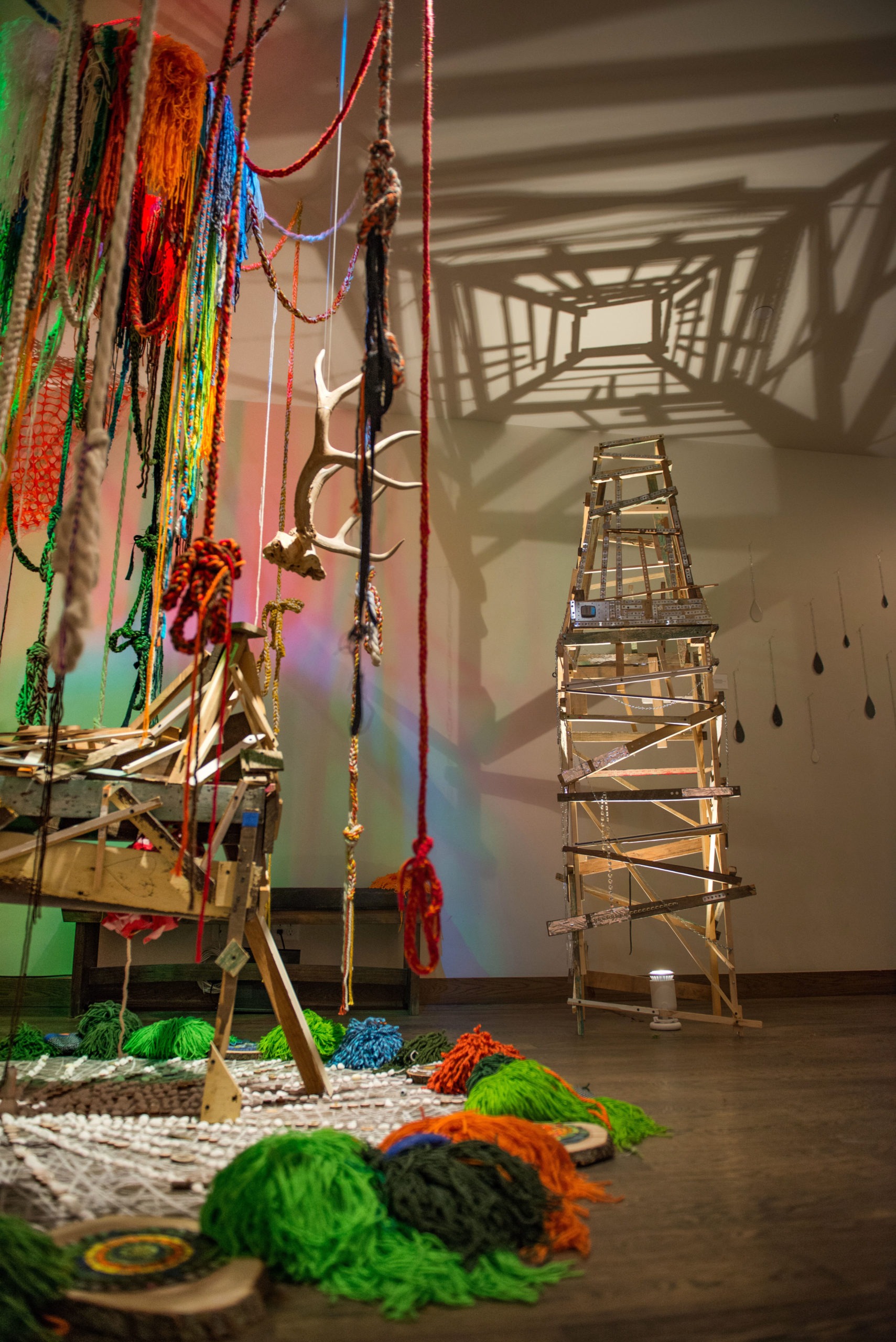
Installation view of Be Unbroken
2017
Salvaged wood, found plastic, salvaged metal, reflectors, broken china, stones, yarn and found deer antlers. Dimensions variable.
Photo: Sarah Schwab – © 2017 Sarah Schwab
I choose to confront this love/hate relationship by incorporating single-use plastic into my work. Discarded items find resurrection in my art installations. I love color, and plastic has a wonderful variety of bright and unusual hues. Plastic is our nemesis, but when I was growing up, plastic was a miracle, an answer to so many of our needs. Today, plastic represents deeper issues like greed, profit, and politics that sadly assure the destruction of our natural world. Plastic is not the enemy – we are.
I accept that we will never be rid of plastic; it is too useful, too affordable, and too pervasive. I want my work to spotlight the abundance of plastics, and I want viewers to reconsider their consumer habits. I love plastic, but I hate it too.
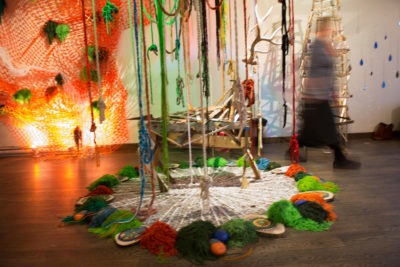 Flair Robinson is an interdisciplinary artist and curator from Telluride, Colorado. Robinson is comfortable working with multiple materials and mediums, including; upcycled objects, fiber, ceramic tile, found plastic and glass. She is informally educated, collecting knowledge from the traditional to the unusual, and is most inspired by visionary and self-taught art, installation art and sculpture.
Flair Robinson is an interdisciplinary artist and curator from Telluride, Colorado. Robinson is comfortable working with multiple materials and mediums, including; upcycled objects, fiber, ceramic tile, found plastic and glass. She is informally educated, collecting knowledge from the traditional to the unusual, and is most inspired by visionary and self-taught art, installation art and sculpture.
Robinson is a colorist, and is fascinated by the endless combinations of varying hues. She is passionate about vintage colors, mostly those used for colored plastic, industrial machinery and fashion, from the 1940’s -1980’s. Many of the materials that she uses in her work, come from these eras. She states, “I believe that each bit of junk creates a sense of nostalgia in the viewer. The pieces have lived their own lives and have their own energy; they have the power to take us back in time and to bring up memories.”
Robinson works intuitively and viscerally. Many of her creative concepts come to her in her dreams.
Flair Robinson is the creator and curator of @peculiarandalluring on Instagram, a virtual gallery featuring an eclectic collection of contemporary art, natural and human-made oddities and land art.
Website: Flair Robinson
Instagram: Peculiar and Alluring
Instagram: Flair Robinson
Photo: Sarah Schwab – © 2017 Sarah Schwab
This article is part of the MAHB Arts Community‘s “More About the Arts and the Anthropocene”. If you are an artist interested in sharing your thoughts and artwork, as it relates to the topic, please send a message to Michele Guieu, Eco-Artist and MAHB Arts coordinator: michele@mahbonline.org.
Thank you. ~

